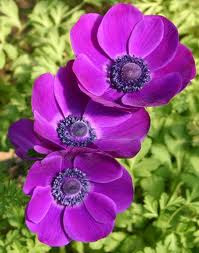| Scientific classification | |
|---|---|
| Kingdom: | Plantae |
| (unranked): | Angiosperms |
| (unranked): | Eudicots |
| Order: | Ranunculales |
| Family: | Ranunculaceae |
| Genus: | Anemone |
The name Anemone comes from Greek and roughly means wind flower, which signifies that the wind that blows the petal open will also, eventually, blow the dead petals away.
The fruits often bear long hairy styles, which aid their distribution by the wind. They produce cup-shaped yellowish, white, purple, violet, or red Anemone flowers.
Spring planting is recommended, and mulch is necessary during the plant’s first winter. In colder areas (Zones 5 and lower), plant anemones in protected spots near walls or fencing, for example, and apply leaf mulch every winter. The type of soil also determines how quickly a plant spreads; anemones spread more easily in a light, moist soil than in a heavy, dry soil.
Anemone bulbs often benefit from a pre-planting soak to get them ready to grow. Before you head out to the garden to plant soak your anemone bulbs for 2-4 hours or overnight in a small bowl of water. This will encourage them to sprout faster and get growing so they develop a good network of roots their first autumn in the garden.
 |
| White with Black Beautiful Anemone |
 |
| Anemone in Pot |
 |
| Red and White Anemone Flower |
 |
| Purple Anemone Flower |






No comments:
Post a Comment